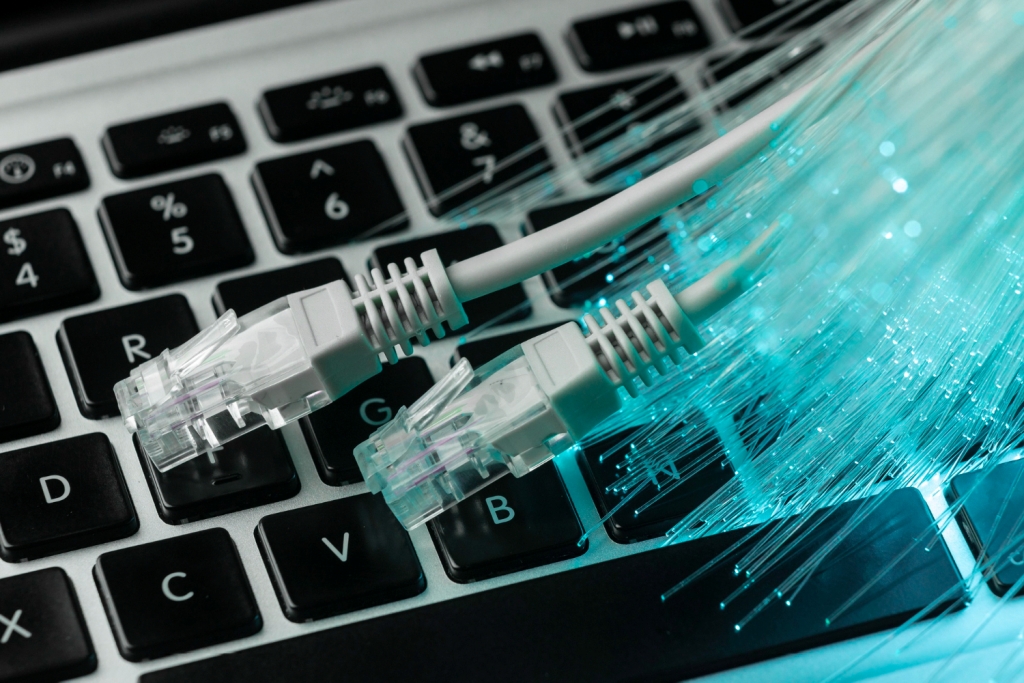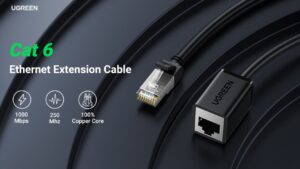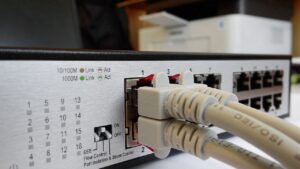An RJ45 fiber optic cable is a crucial networking component used in Dubai, UAE, and worldwide. Unlike traditional copper cables, it utilizes optical fibers to transmit data at high speeds over long distances, enhancing connectivity and supporting the technological infrastructure in this dynamic region.
I. Rj45 Fiber Optic Cable Type

- RJ45 Connector: RJ45 connectors are commonly used in Ethernet cables, but for fiber optics, they are less common due to size constraints.
- LC Connector: LC connectors are small and ideal for high-density installations.
- SC Connector: SC connectors are easy to install and offer good performance.
- MTP/MPO Connector: MTP/MPO connectors are used for multi-fiber connections.
- ST Connector: ST connectors are older but still used in some applications.
- Duplex vs. Simplex: RJ45 fiber cables can be duplex (two strands) or simplex (single strand).
- Fiber Types: RJ45 fiber optic cable can utilize different fiber types, including single-mode and multi-mode.
- Use Case: The choice of RJ45 fiber optic cable type depends on the specific networking needs, distance, and budget.
II. RJ45 to Fiber Optic Converter

1. RJ45 to Fiber Optic Converter Basics:
- Converts RJ45 Ethernet signals to fiber optic signals.
- Extends network range and reduces electromagnetic interference.
2. Improved Data Transmission:
- Fiber optics offer higher data transfer speeds and longer distances.
- Ideal for demanding applications like data centers.
3. Compatibility:
- Guarantees similarity among copper and fiber organizations.
- Allows seamless integration of different network types.
4. Security and Reliability:
- Fiber is immune to electrical interference, enhancing network reliability.
- Offers enhanced security due to difficult tapping.
5. Compact and Easy Installation:
- The smaller plan makes it simple to introduce in restricted spaces.
- Plug-and-play setup for quick deployment.
6. Cost-Efficiency:
- Long-term savings due to reduced maintenance and downtime.
- Efficient use of existing copper infrastructure.
7. Future-Proofing:
- Adapts to evolving network needs and technology advancements.
- Protects your investment in network infrastructure.
8. Versatile Applications:
- Suitable for industries like telecommunications, healthcare, and finance.
- Enables high-speed data transfer for various purposes.
III. Fiber Optic Ethernet Cable

- Lightning Speed: Fiber optic Ethernet cables transmit data at the speed of light, offering ultra-fast internet connections.
- Immune to Interference: Dissimilar to copper Cables, fiber optics are insusceptible to electromagnetic obstruction, guaranteeing a steady association.
- Long-Distance Reach: Fiber Cables can give information over longer distances without signal corruption.
- Enhanced Security: Information transmission through fiber is more enthusiastically to take advantage of, giving better security.
- Future-Proof: Fiber optics are the future of networking, ready to support evolving technology demands.
- Thin and Lightweight: Slim and Lightweight: Fiber links are slight, lightweight, and adaptable, making establishment simpler
- Minimal Latency: Low latency ensures smooth gaming and real-time applications.
- High Bandwidth: Fiber offers high bandwidth capacity for streaming, downloading, and more.
- Durability: RJ45 fiber optic cable are resistant to environmental factors and can last for decades.
- Cost-Efficiency: Over time, the benefits outweigh the initial installation cost.
IV. Fiber Optic Ethernet Cable Speed

1. Fiber optic cables:
- Can transmit data at speeds of up to 10 Gbps (gigabits per second) or more.
- It is faster than Ethernet cables for both uploads and downloads.
- Are less defenseless to obstruction from other electronic devices.
- Are more expensive to install than Ethernet cables.
- Are utilized for significant distance information transmission, for example, among urban communities and nations.
2. Ethernet cables:
- Can send information at rates of up to 1 Gbps (gigabits each second).
- Are slower than fiber optic cables for both uploads and downloads.
- Are more vulnerable to impedance from other electronic devices.
- Are more affordable to introduce than fiber optic cables.
- Are utilized for brief distance information transmission, like inside a home or office.
A. Are Ethernet Cables Fiber Optic
1. Ethernet Cables vs. Fiber Optic Cables:
- Ethernet cables use copper wires, while fiber optic cables use glass or plastic fibers for data transmission.
2. Speed and Bandwidth:
- Fiber optics offer quicker speeds and higher transmission capacity, making them ideal for elite execution organizations.
3. Distance:
- Ethernet cables are limited in distance (up to 100 meters), whereas fiber optics can span much greater distances (kilometers).
4. Immunity to Interference:
- Fiber optics are immune to electromagnetic interference, while Ethernet cables can suffer from signal degradation.
5. Thinness and Weight:
- Fiber optic cables are more slender and lighter, making them simpler to introduce and oversee in restricted spaces
6. Security:
- Fiber optics are harder to tap into, providing enhanced data security compared to Ethernet cables.
7. Cost:
- Ethernet cables are by and large more financially savvy for more limited distances, yet fiber optics are more expense-productive for significant distance, fast associations.
8. Use Cases:
- Ethernet cables are common in home and office networks, while fiber optics are used in data centers, ISPs, and long-haul communications.
9. Future-Proofing:
- Fiber optics are considered more future-proof as they can support increasing data demands over time.
Overall, choosing between Ethernet and fiber optic cables depends on your specific network requirements, distance, and budget constraints.
B. Can RJ45 be used for fiber optic cable?
No, RJ45 connectors are typically used for copper Ethernet cables. Fiber optic cables utilize various connectors, like LC, SC, or ST, intended for communicating light signals rather than electrical signs.
C. What is optical Fibre and RJ45?
Optical fiber is a type of cable that uses light to transmit data. It is faster and can carry more data than RJ45 fiber optic cable, which is a copper cable that uses electrical signals. Optical fiber is often used for long-distance data transmission, such as between cities or countries, while RJ45 fiber optic cable is more commonly used for short-distance connections, such as within a home or office.









